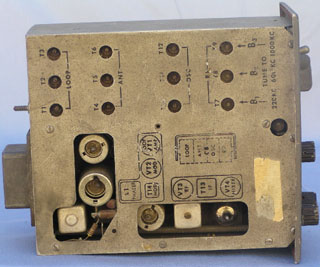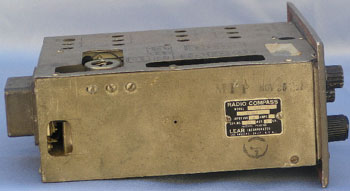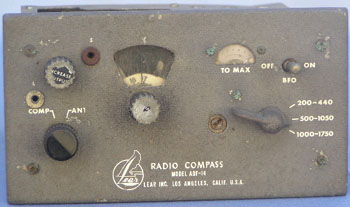General Description
It operates over the frequency range of 190 -1750 kc, covered in three bands.
It is primarily a navigational device, locating the direction from which radio signals are received in order to give the operator a bearing which is displayed in degrees of azimuth on a direction indicator. It may be used for both aircraft homing and position fixing, using any type of transmitted radio signal within its frequency range, whether modulated or unmodulated.
When used as a communications receiver, the set is capable of receiving amplitude modulated and unmodulated radio signals in its frequency range.
It can also be used to receive radio range (NDB) signals.

Technical Data
Band 1 190 - 430 kc
Band 2 430 - 1025 kc
Band 3 1025 - 1750 kc
The IF frequency is 465kc.
Power input is 24v at 3.7 amps. Power consumption is 104 watts. (Many sets have been converted to 12 volts, some at the factory)
Audio output impedance is 3.2 ohms. There are 16 valves in the receiver.
The set consists of a radio receiver (RF front end), an electronic
control amplifier (which contains IF, audio, DF and vibrator supply), a loop antenna, a wire antenna and a direction indicator type ID-91.

The ARN54 is the militarised version of the ADF14. The RAAF used the ADF14 version, which bear 1956 reconditioning plates. The military manual is TM 11-519, and is dated February, 1957.
The sets work well, although vibrator hash is a problem. The length of the wire antenna is very critical for good DF results. Operating such a receiver indoors results in false bearings, but outside performance is reasonably accurate. As in all ADF receivers, the length of the cable connecting the loop to the set is absolutely critical for correct operation.
